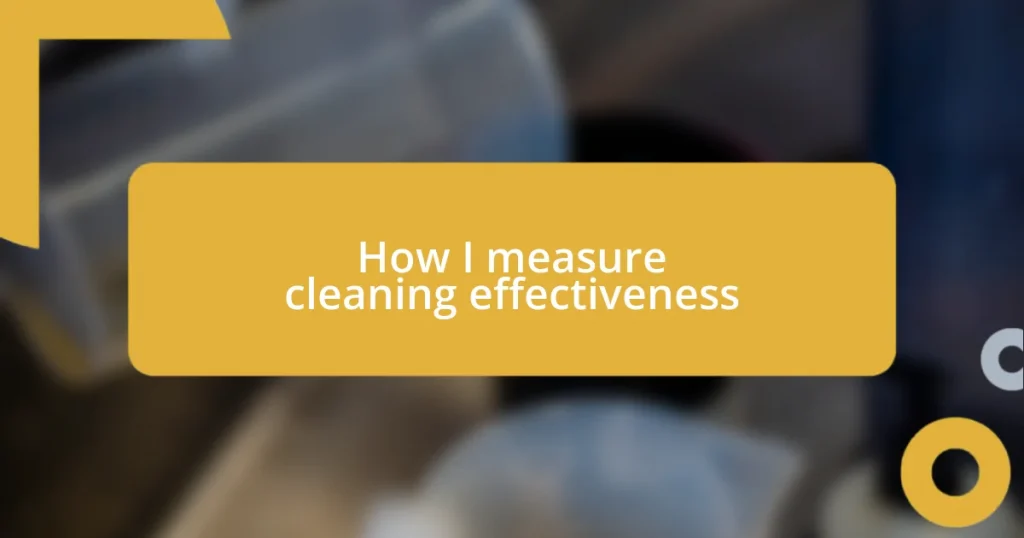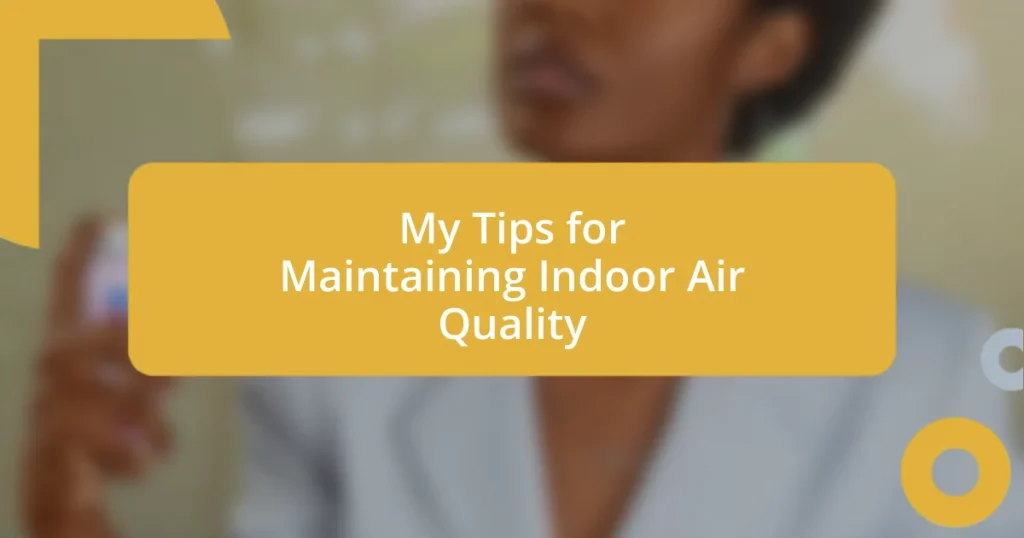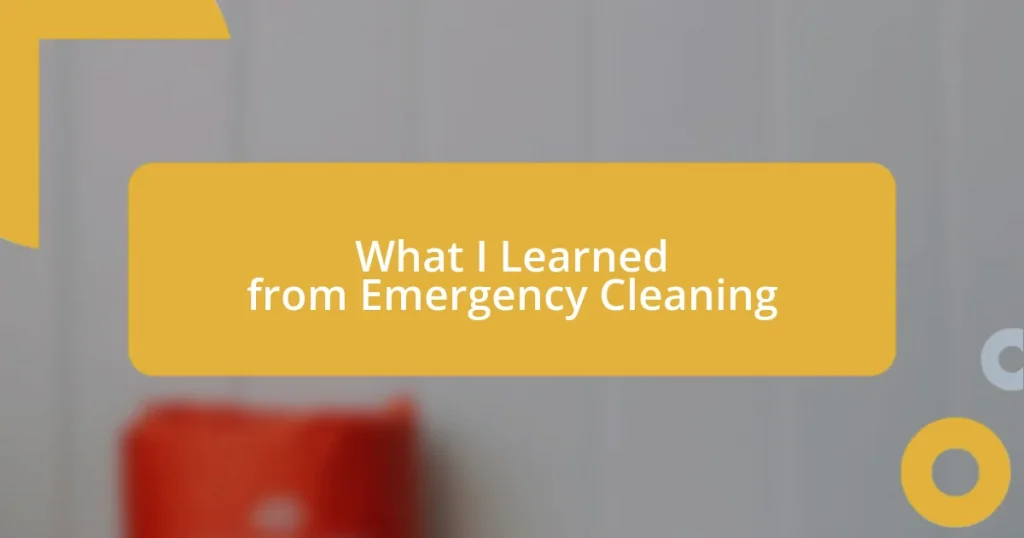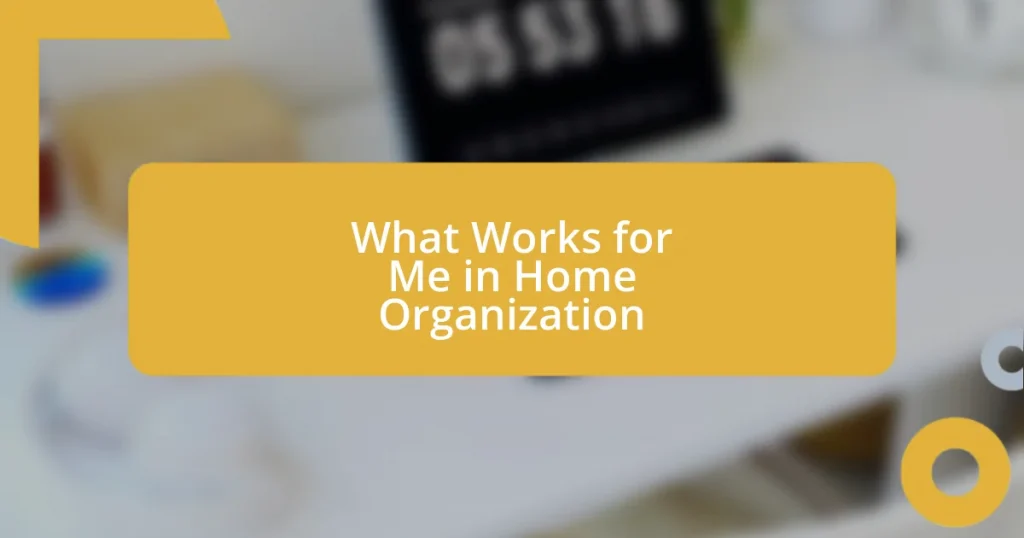Key takeaways:
- Cleaning effectiveness is evaluated not just by appearance but by the feel and scent of spaces, emphasizing the importance of how environments impact well-being.
- Key metrics for cleaning include residue level, time efficiency, and psychological impact, which provide a comprehensive view of cleaning results.
- Incorporating specific tools, methods, and regular reviews into cleaning routines enhances effectiveness and offers insights for continuous improvement.
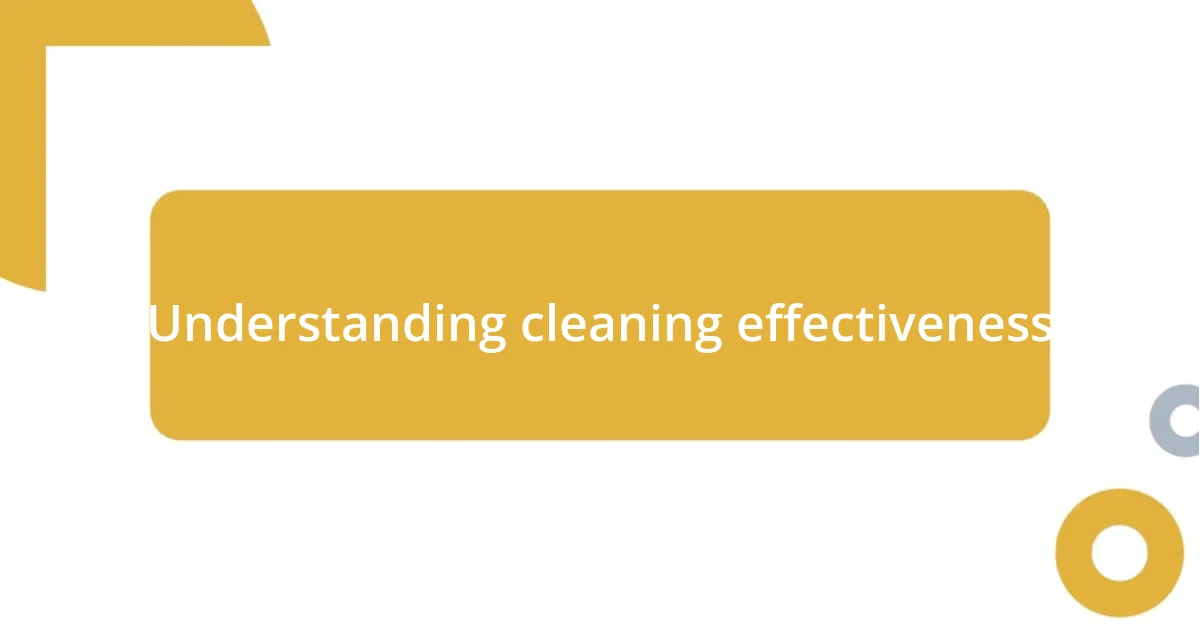
Understanding cleaning effectiveness
When I think about cleaning effectiveness, it’s not just about how things look but how they feel. I once tackled a particularly grimy kitchen countertop that sparkled after I finished. That moment made me realize—if my space feels clean and inviting, then I’ve achieved true cleaning effectiveness.
Have you ever noticed that some surfaces seem to hold onto dirt no matter how much you scrub? I’ve found that certain materials, like stainless steel, can be tricky. Understanding how different surfaces react to cleaning agents is crucial—some require gentler treatment while others can handle more aggressive methods.
For me, testing cleaning effectiveness often comes down to a simple, yet powerful, experiment: the smell test. I remember cleaning my bathroom with a new product and being pleasantly surprised by how fresh and invigorating it felt. That aroma lingered, and to me, it signified a clean environment. Isn’t it fascinating how a scent can change our perception of cleanliness?

Key metrics for cleaning evaluation
When evaluating cleaning effectiveness, I often look at the level of residue left behind. One time, after a deep clean of my living room, I decided to check the surfaces with a white cloth. The sight of dirt smudges on that cloth was an eye-opener. It highlighted how much grime can be left unnoticed and the importance of thorough cleaning practices.
Another key metric that shouldn’t be overlooked is time efficiency. Recently, I cleaned my windows using a new method that promised quicker results. To my delight, I reduced the cleaning time by half without sacrificing clarity. This experience taught me that while traditional methods might feel reliable, exploring new techniques can yield better outcomes.
Lastly, I reflect on the impact cleanliness has on overall well-being. I remember coming home to a spotless space after a hectic week—it was like a breath of fresh air. The psychological boost of a clean environment is a metric I value deeply. It’s more than just visual satisfaction; it’s about how a tidy space can uplift your mood and productivity.
| Metric | Description |
|---|---|
| Residue Level | Evaluation of visible dirt left on surfaces post-cleaning |
| Time Efficiency | Assessing time taken to achieve cleaning goals |
| Psychological Impact | Feeling of well-being and satisfaction in clean spaces |

Methods for measuring cleanliness
Measuring cleanliness can take on various forms, and I find that the method I choose often depends on the space I’m working in. For instance, after a recent spring cleaning of my bedroom, I decided to employ a UV light to detect any lingering germs that traditional cleaning methods might have missed. The experience was quite eye-opening—seeing those unexpected areas illuminated highlighted how thoroughness in cleaning is key to true cleanliness. It reminded me that sometimes what we can’t see is just as important as what we can.
Here are some effective methods I utilize to measure cleanliness:
- Visible Inspection: Checking for smudges, stains, or spills to assess surface cleanliness.
- Touch Test: Running a clean hand over surfaces can reveal hidden residue that isn’t immediately visible.
- Swab and Culture Test: Using swabs to collect samples and send them to a lab for microbial analysis.
- UV Light Inspection: Utilizing UV lights to reveal germs and stains that aren’t detectable to the naked eye.
- Hygrometer Measurement: Monitoring humidity levels, as high humidity can encourage mold growth, indicating inadequate cleaning.
By incorporating these methods, I feel more confident that I’m truly achieving cleanliness in my living spaces, far beyond just surface appearances.

Tools for cleaning assessment
When it comes to assessing cleaning effectiveness, I’ve found that having the right tools can make a world of difference. For instance, using an adenosine triphosphate (ATP) meter was a game changer for me. The first time I employed it in my kitchen, the readings revealed higher contamination levels than I anticipated. It was a bit unsettling, but that objective data pushed me to refine my cleaning routine.
Another tool that I swear by is a simple pH test strip, especially for cleaning products. I vividly recall the time I tested my homemade cleaner. The strip showed that the pH level was too high, which meant it could leave a residue that might be less effective for certain surfaces. Understanding this helped me adjust my cleaning solution, ensuring my surfaces stayed both clean and safe.
Lastly, I’ve recently started incorporating digital apps that track cleaning tasks and their outcomes. It might sound surprising, but seeing cleaning statistics over time has motivated me to keep my home in tip-top shape. Have you ever tried tracking your cleaning success? It not only helps me stay organized but also gives me a sense of accomplishment when I see my progress visually recorded. It makes the entire cleaning process feel more rewarding and purposeful.

Cleaning effectiveness in different environments
When it comes to cleaning effectiveness, I’ve noticed that different environments require tailored approaches. A memorable instance was during my vacation rental inspection—understanding the unique challenges of high foot traffic areas really shifted my focus. I realized that simply dusting and vacuuming weren’t enough; I had to consider robust disinfection protocols to ensure guest satisfaction and health.
In comparison, my home office presents a different scenario. Here, I’m often dealing with electronic equipment and paper clutter, so I’ve developed a routine that emphasizes both visual inspection and the touch test. It’s oddly satisfying to glide my hands across a freshly cleared desk surface—it feels like an invitation to productivity. Have I ever missed a corner filled with unseen dust bunnies? Absolutely! Those moments drive home the importance of a thorough approach, especially in spaces where I spend so much time.
Lastly, outdoor cleaning has its own set of challenges. I recall power washing my patio and being amazed at the transformation. It struck me—cleaning in open spaces often means battling nature’s elements like dust and pollen. Using a combination of visible inspection and pressure washing, I could see how much dirt truly accumulated, reminding me that effective cleaning extends beyond indoor spaces. It’s this realization that has shaped my perspective on what cleanliness really means in various environments.

Analyzing results and improving practices
To truly analyze the results of my cleaning efforts, I often reflect on my experiences. For example, after deep cleaning my living room, I felt an overwhelming sense of satisfaction when I noticed that the air felt fresher and more inviting. But I wonder, how many of us stop to genuinely assess the long-term impact of our cleaning routines? This self-reflection is key; it helps me identify what methods yield the best results and inspires me to adapt my practices for even greater effectiveness.
I also believe in the power of feedback, both from my own observations and from those around me. There’s a notable difference when I ask family members about their perceptions of cleanliness after I’ve tried a new approach or product. Their input often reveals aspects I might have missed, like hidden stains on the sofa or odd smells that linger. I remember one time, after switching to a new wood cleaner, my partner mentioned how much more vibrant the furniture looked. That simple remark opened my eyes to the importance of testing and adjusting cleaning practices based on real-world feedback.
Incorporating a review session into my cleaning schedule has also been invaluable. I take a few minutes to jot down observations right after completing my tasks. How did it feel? Did I notice any areas that still needed attention? I’ve found that these little notes not only track my progress but also ignite new ideas for improvement. It’s intriguing how a straightforward habit like this can yield insights that make cleaning less of a chore and more of a personal project I genuinely care about. Wouldn’t you agree that enhancing our cleaning routines could lead to a more enjoyable living space?

Best practices for consistent effectiveness
To achieve consistent effectiveness in my cleaning routines, I’ve discovered the significance of setting clear standards. Reflecting back, I recall one weekend when I took the time to define what “clean” actually meant for my kitchen. I made a checklist that included sanitizing countertops, cleaning appliances, and organizing the pantry. This focused approach not only streamlined the process but also transformed my kitchen into a space I enjoyed cooking in again. Have you ever evaluated your own standards for cleanliness? It’s a game changer.
Another practice I’ve found essential is to schedule regular cleaning sessions. I usually allocate specific days for tackling different areas, like dusting on Wednesdays and deep cleaning on Saturdays. This rhythm has not only made my home more manageable but also contributed to a consistent level of cleanliness that I can rely on. Sometimes, I even invite a friend over to hold each other accountable. Don’t you think having someone join you makes the task feel less tedious and more fun?
Using the right tools has played a crucial role, too. I remember the day I upgraded my vacuum to one with specialized attachments for tough areas like baseboards and corners. The difference was eye-opening! It’s fascinating how the right equipment can elevate the effectiveness of your cleaning routine. What tools have you found to be the most helpful? Each of these small adjustments has made my cleaning efforts more effective and enjoyable, and I’m genuinely curious to hear about your experiences as well.










